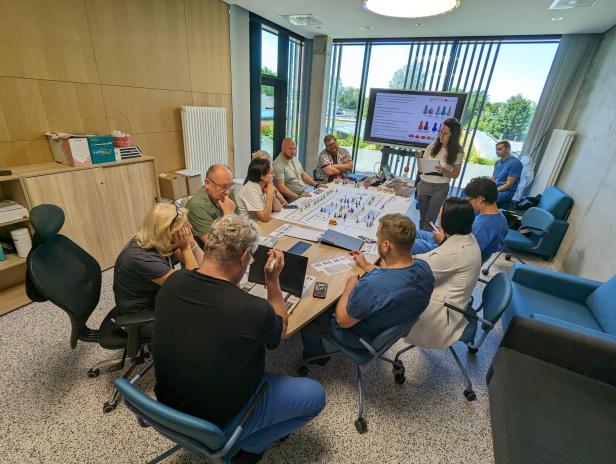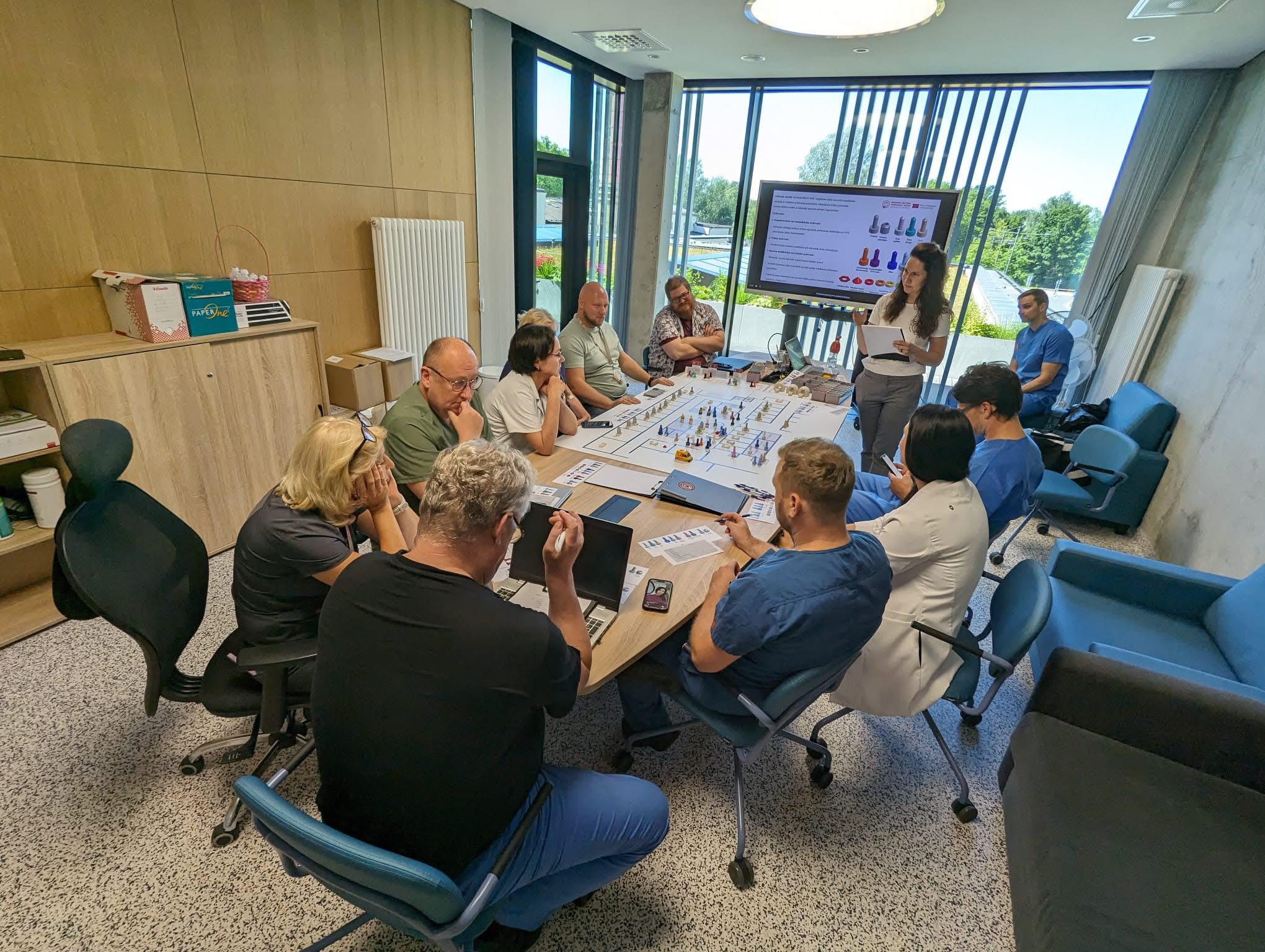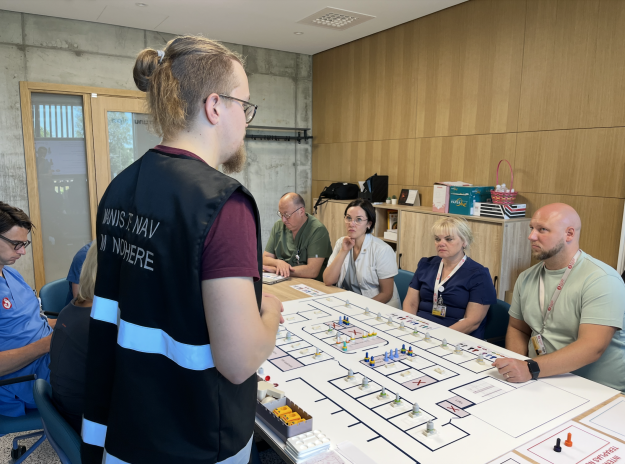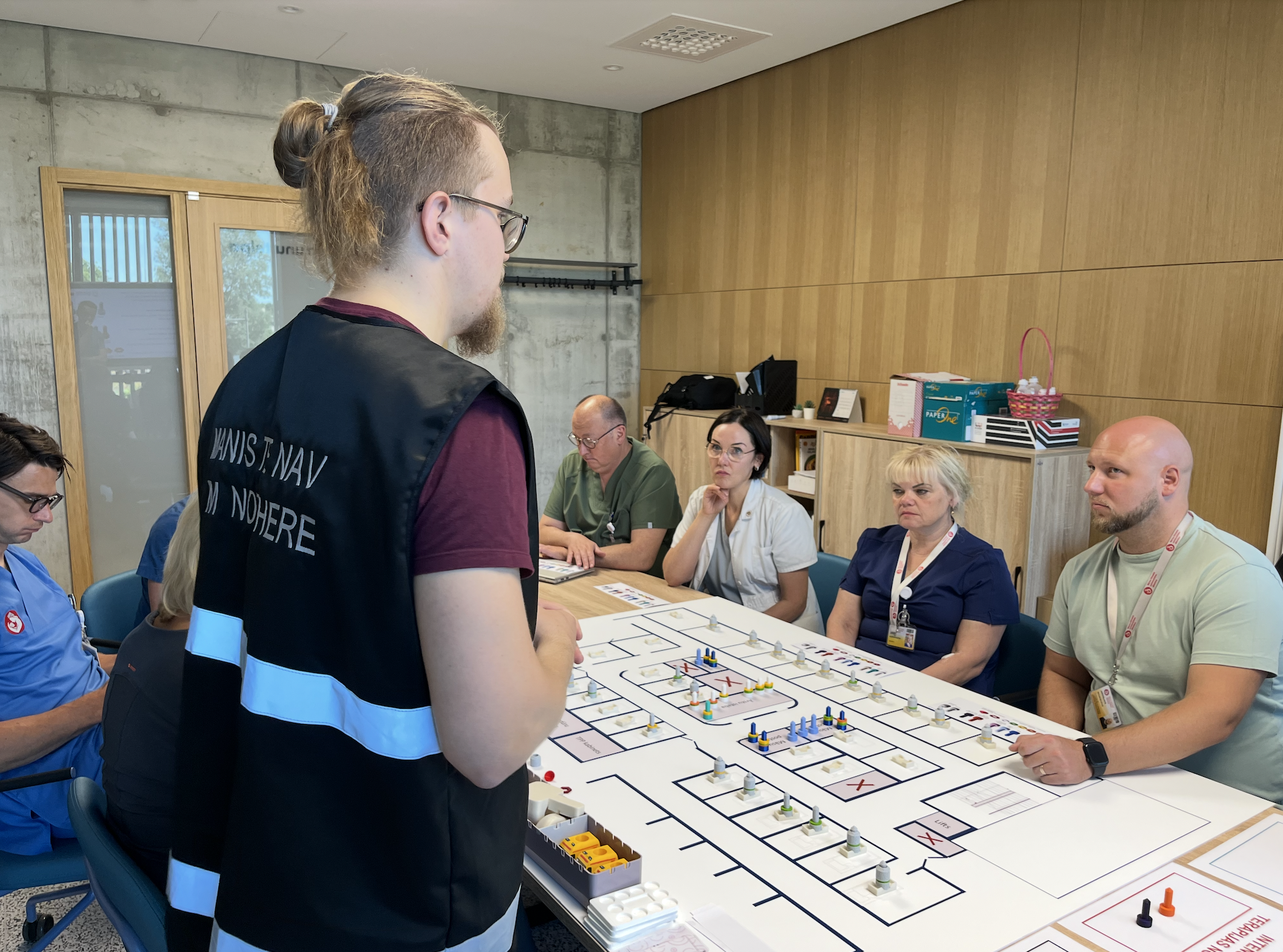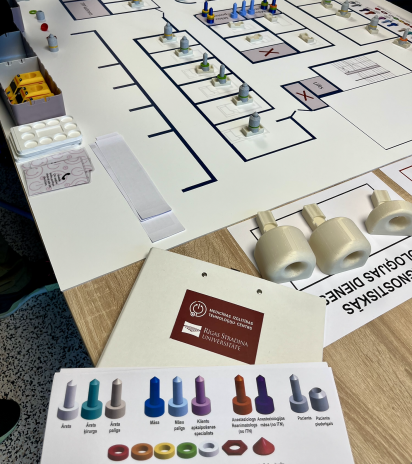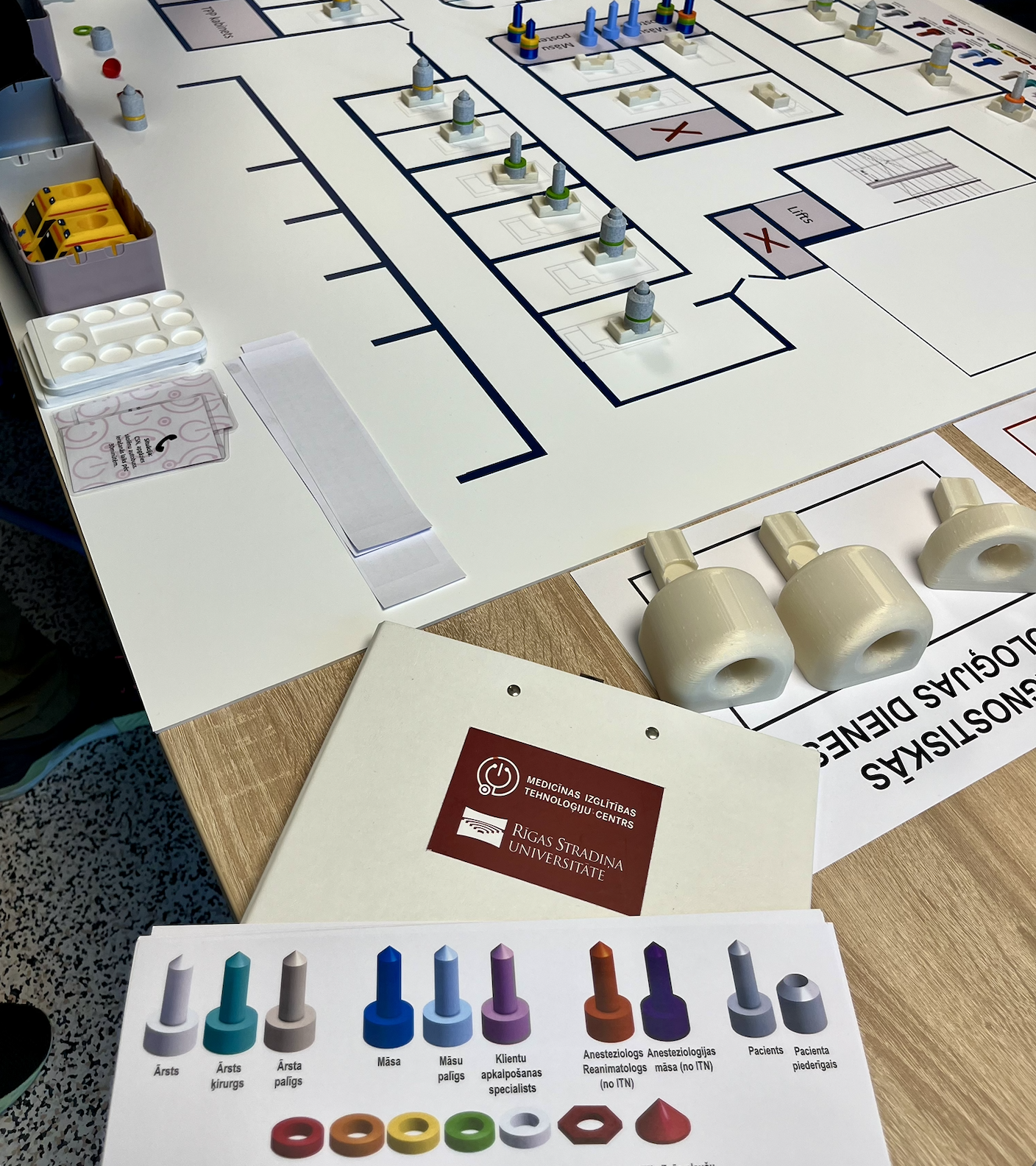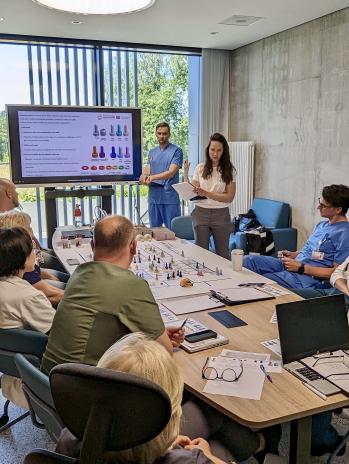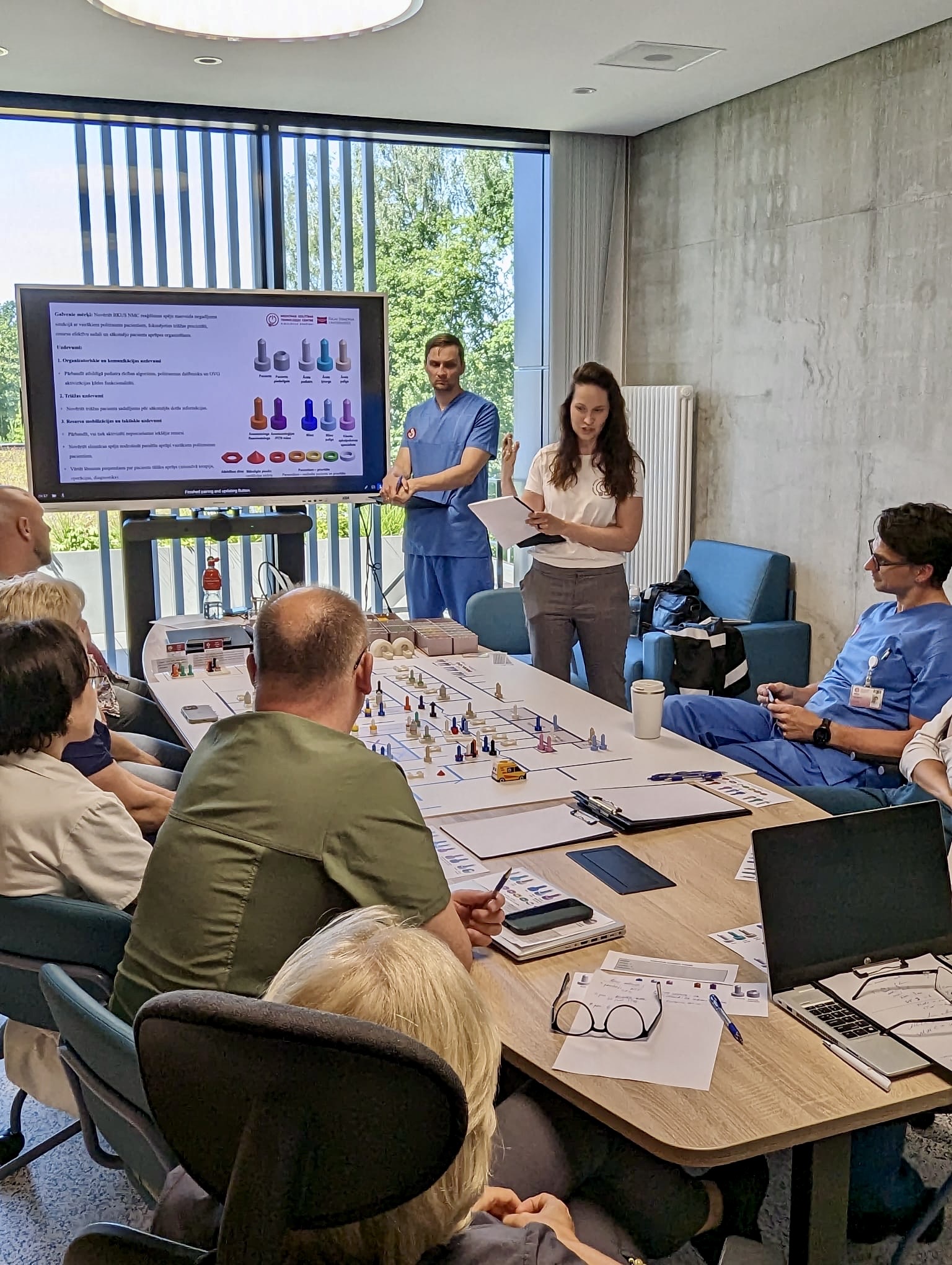RSU METC develops table-top simulation and enhances BKUS readiness to admit patients during the Song and Dance Festival
By expanding its range of simulations, the RSU Medical Education Technology Centre (METC) has developed an innovative table-top simulation platform to assess the readiness of medical institutions to admit large numbers of critically ill patients.
This week, the newly developed solution was presented to the staff of the Children’s Clinical University Hospital, thereby supporting preparations for a potentially increased flow of patients during the XIII Latvian School Youth Song and Dance Festival.
Table-top simulation is a structured and visually clear method that enables hospital staff to work through complex scenarios in a safe environment, without any risk to patients. It helps to identify shortcomings in communication and cooperation, and to test resource planning and decision-making processes in the event of a crisis. Such simulations are particularly valuable when preparing for a large influx of patients, for example, during major public events.
METC simulation instructors provided methodological support in the development and implementation of the simulations. In collaboration with the Department of Physics at the Faculty of Medicine, they also created an innovative technical solution for the table-top simulation – 3D-printed models representing patients (with weight indicated according to triage category), doctors from various specialties, nurses, nursing assistants, and hospital diagnostic radiology equipment.
The table-top simulation exercise at the Children’s Hospital was conducted by Dr. Jānis Kolbergs, METC Simulation Instructor, Anaesthesiologist, and Intensive Care Physician, Dr. Ieva Šlēziņa, Director of METC and Dr. Aleksandrs Oborins, Simulation Instructor, who was responsible for the innovative 3D technical solution.
Leading specialists at the Children’s Hospital noted that participating in the table-top simulation was a valuable learning experience, helping them identify the personnel and infrastructure resources required to effectively provide care in the event of a potentially increased influx of critically ill patients.
When emphasising the advantages of table-top simulation as a method, Ieva Šlēziņa, Director of METC, notes:
'Table-top simulation helps to see the bigger picture, understand patient flows and resource limitations, as well as the consequences of strategic decisions.
It supports improvements in hospital structure, communication, and collaboration. In a safe environment, participants can experiment with decision-making and strategy without putting patients at risk. Table-top simulations are cost-effective, as they do not require the use of real medical equipment or physical facilities, and scenarios can be easily adapted to different learning objectives.’
The RSU METC team is ready to offer the newly developed table-top simulation solution to other hospitals across Latvia.

